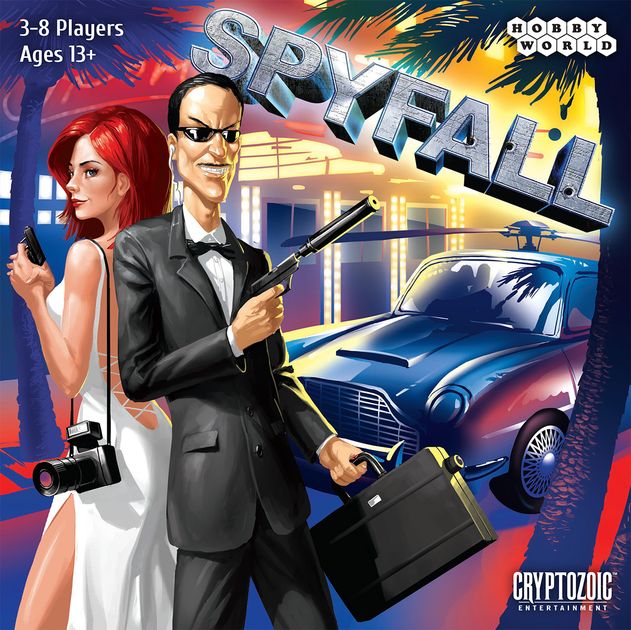For this Critical Play, I played Year Walk, a game by Simogo, on my iPhone. The target audience is likely ~ages 12+; it is anyone who enjoys solving puzzles and can handle creepy illustrations (e.g. Fig. 1). The format of this game is Player vs Game; the player explores the story world to unlock its secrets. Specifically, the player plays as a “Year-Walker,” a person who is exploring a Swedish forest at a certain time of year with the goal of unlocking the secrets of the future. This creates a unique form of Embedded Narrative, where the hidden narrative that the player is trying to piece together takes place not in the past, but in the future. This game also includes elements of Enacting Narrative, as the player can freely move through and interact with the story world.
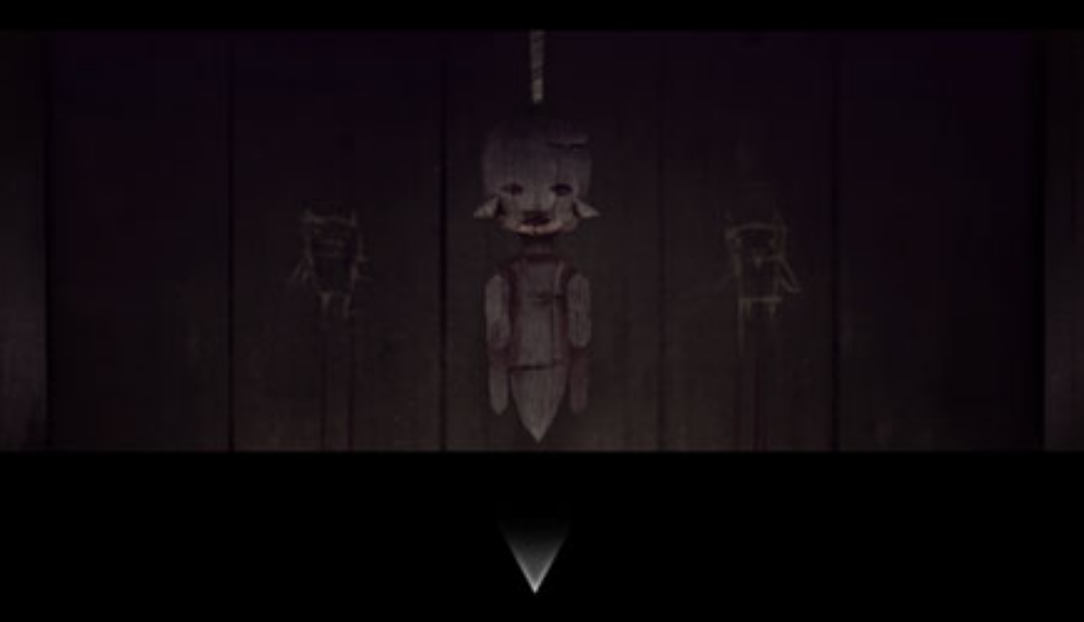
First, this game is built on a walking mechanism, where mystical hints that lead to more hints are strewn throughout the world, and the player may move east, west, north, or south to try to find them and piece them together. Since not all explorable areas of the world hold clues, the player enters the mindset of the aimless Year-Walker, who also does not know when or where they will find their secrets. This strengthens the Fantasy and Discovery aesthetics of the game. However, this comes with a tradeoff: at times, I felt that my progress was hindered not because of a difficult puzzle, but because I could not find where the next puzzle would be, and would wander in circles through the world for a long time without seeing anything with which I could interact. This was frustrating, but I think this frustration could be alleviated by simply giving the player a map of the story world so that they can avoid retracing their steps while searching for a novel puzzle.
That being said, one of my favorite mechanisms of the game was the fact that some areas of the world would change while the player was not there. For instance, the gate in Figure 2 and the tombstone in Figure 3 only appear once night falls; they are not there when the player first explores the forest in the daytime. Similarly, mystical characters, such as the spirit woman in Figure 4, appear occasionally in unexpected areas. These magical occurrences contribute to the surrealism of the game world, and thus are instrumental in cultivating the Discovery and Narrative aesthetics.
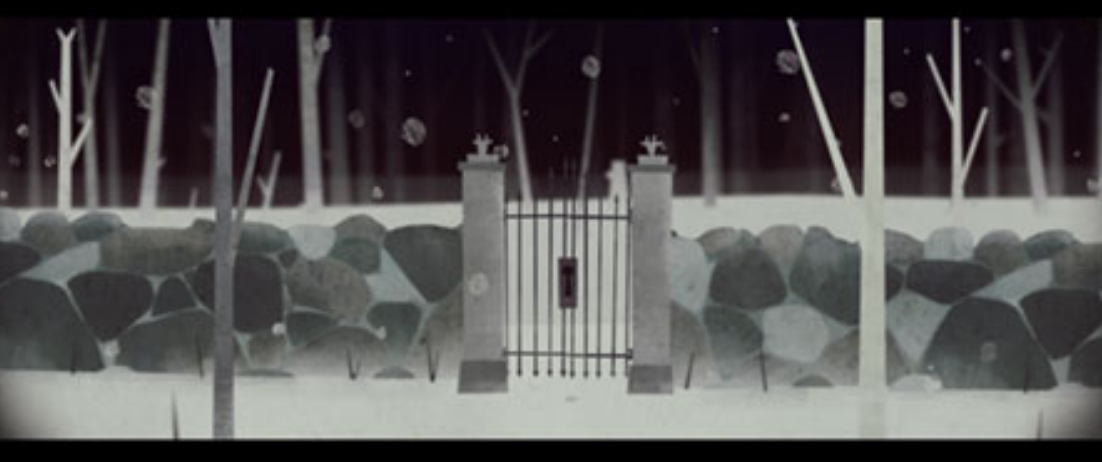
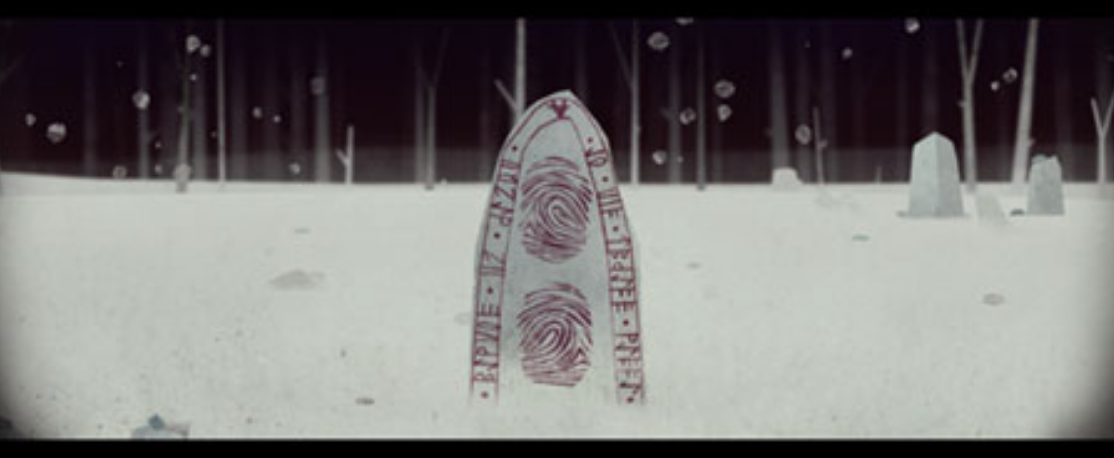
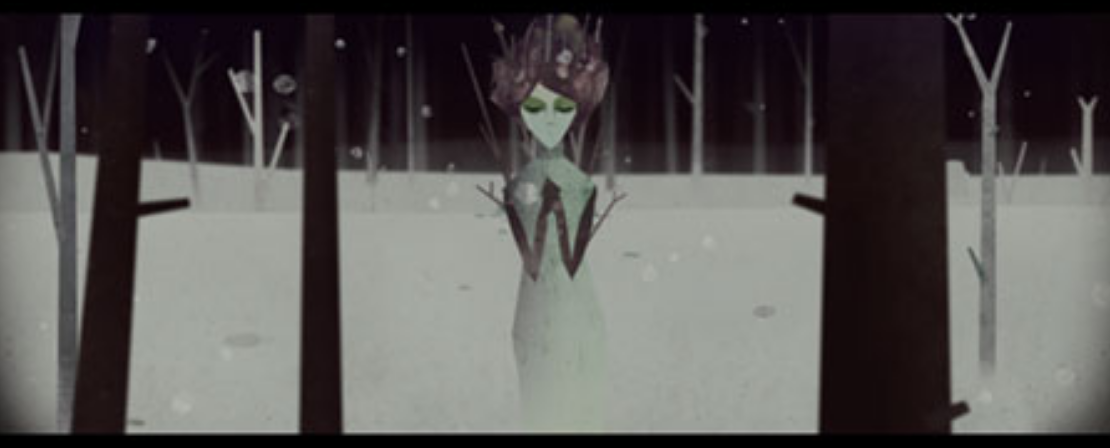
Throughout the game, the surreal, slightly-creepy art and music immerse the player in the game world and help to evoke the wary, half-dreaming mindset of the Year-Walker. One of my favorite puzzles is one where the player must follow a spirit by choosing doors to enter based on the pitches of a voice that emanates from behind the doors. By this point, the player has already been hearing this voice mixed in with the game music for several minutes, and has likely stopped paying close attention to the music. The realization that the music is crucial to the story world, rather than simply a soundtrack (i.e. music that you would not hear if you were actually in the forest), is chilling and exciting. From then on, the player is tuned into the audio landscape as well as the visual landscape of the game. Thus, the Sensation aesthetic of the game encompasses multiple senses.
Finally, the game has a strong Challenge aesthetic; the puzzles are appropriately difficult and get harder as the player gets used to the game. Moreover, the puzzles fit within the Sensory and Narrative aesthetics of the game; for instance, in the sound-based puzzle mentioned above, the player can imagine that they really would search for the spirit by following her singing voice.


